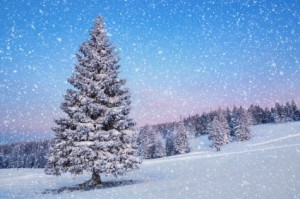
A festival around the time of the winter solstice seems to have been a common celebration among many ancient peoples. Often, these midwinter celebrations focused on feasting, offering animal sacrifice, and remembering or worshiping ancestors. As a modern day Pagan celebration, Yule often shares traditions with these ancient festivals, but has developed into a distinct holiday. Here is a quick guide to Yule for interfaith ministers who have become ordained with the Universal Life Church. After having become ordained, a new Universal Life Church interfaith minister may be surprised by the variety of customs associated with Yule.
Yule is a Pagan holiday celebrated around the winter solstice. An important thing for Interfaith ministers to remember is that not all Pagan groups celebrate Solstice the same way, or even on the same date. Some Pagans celebrate Yule with customs that reflect a certain ethnic heritage within paganism, such as Norse, Anglo Saxon, Celtic, or Germanic ancestry. The exact date for Pagan Yule celebrations may vary from group to group, or based on the individual Pagan’s preference. Celebrations may coincide with the actual date of the winter solstice, which can change from year to year, or might occur on a set date or calendar day every year, such as the Saturday before the winter solstice. Some groups even consider Yule to be a twelve day festival, rather than a single day of observances.
There are many traditions associated with Yule. The telling of the story of the Oak King and Holly King, or theatrical reenactments of their yearly battle is a Yule custom most closely associated with Wiccan paganism. The Oak King aspect of the God is said to rule from Winter Solstice until Summer Solstice, during the dark part of the year. Other Pagans may prefer to share stories and poetry related to the season of Winter, or concepts like hope, perseverance, the season of rest, or the role of light and darkness in spirituality.
Most Pagan groups will share some form of feast to celebrate Yule. This ancient custom may have arisen as tribute to the previous autumn harvest, and with solemn looking ahead to the lean time that occurred in pre-industrial agricultural societies from late winter into early spring. Modern Pagans may celebrate family and ancestors at Yule feasts, or pay tribute to the changing seasons by remembering that Yule is the time of the shortest day and longest night.
Burning a Yule log is often part of Yule celebrations. The Yule Log may be carefully selected earlier in the year with the intent that it would be burned at Yule. Some groups may desire to bless the log or add offerings to the fire, while others consider the Yule Log’s main purpose to be for the enjoyment of the celebrants.
Decorating with greenery is another common Yule custom. Garlands and wreaths made of holly, ivy and mistletoe are traditional at Yule because these plants are still green even when most other plants have died or gone dormant for the year.

